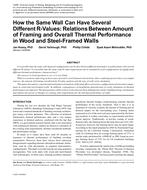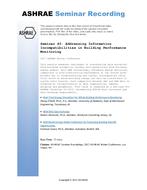Click here to purchase
The Internet of Things (IoT) technology has dramatically improved the efficiency of today’s building operation and management. By connecting controllable devices into a communication network, control signals can be easily passed to the devices, and operating status can be acquired from measurable ends with minimal effort. However, this all-connected configuration could also expose the network-based control system (NBCS) to malicious actions, such as cyberattacks. One of the common NBCSs is the building automation system. With the promotion of grid-interactive efficient buildings (GEBs), there has been increasing attention on securing the buildings from the network perspective. This research proposes a maximum-impact adversary design framework so that the adversary can provide the most adversarial impact on the controlled system while remaining stealthy. The proposed framework is numerically demonstrated on a network-based building energy and control system. The building energy system is built in a Modelica-based simulation environment and controlled by the state-of-the-art ASHRAE Guideline 36 control sequences. The control commands at the supervisory level, generated from the Guideline 36 controller, are assumed to be sent to local devices through communication networks using the BACnet protocol. Simulation results show that the proposed maximum-impact adversary on such a system can stealthily affect the building system’s performance to its maximum extent. It is anticipated that results can be used by researchers and practitioners in the building automation industry to design efficient and robust cyber-attack detection algorithms, especially for stealthy attacks.
Product Details
- Published:
- 2023
- Number of Pages:
- 9
- Units of Measure:
- Dual
- File Size:
- 1 file , 2.5 MB
- Product Code(s):
- D-AT-23-C048
- Note:
- This product is unavailable in Russia, Belarus


